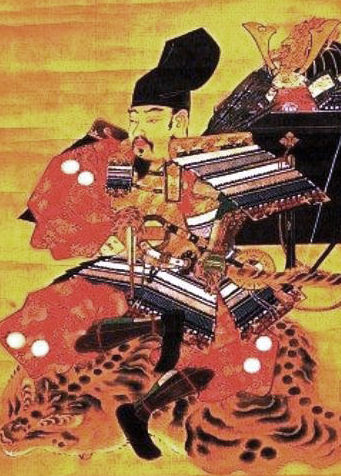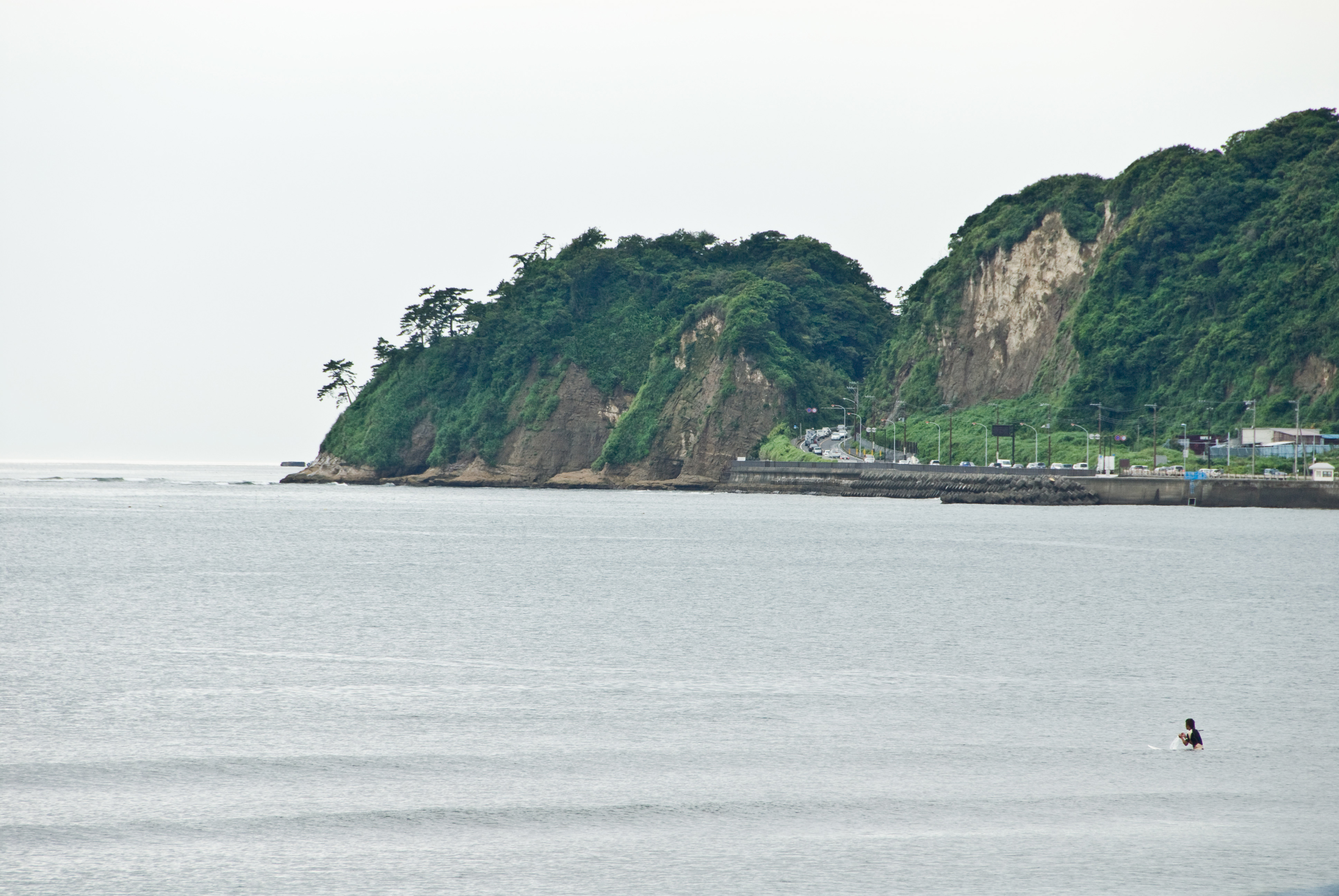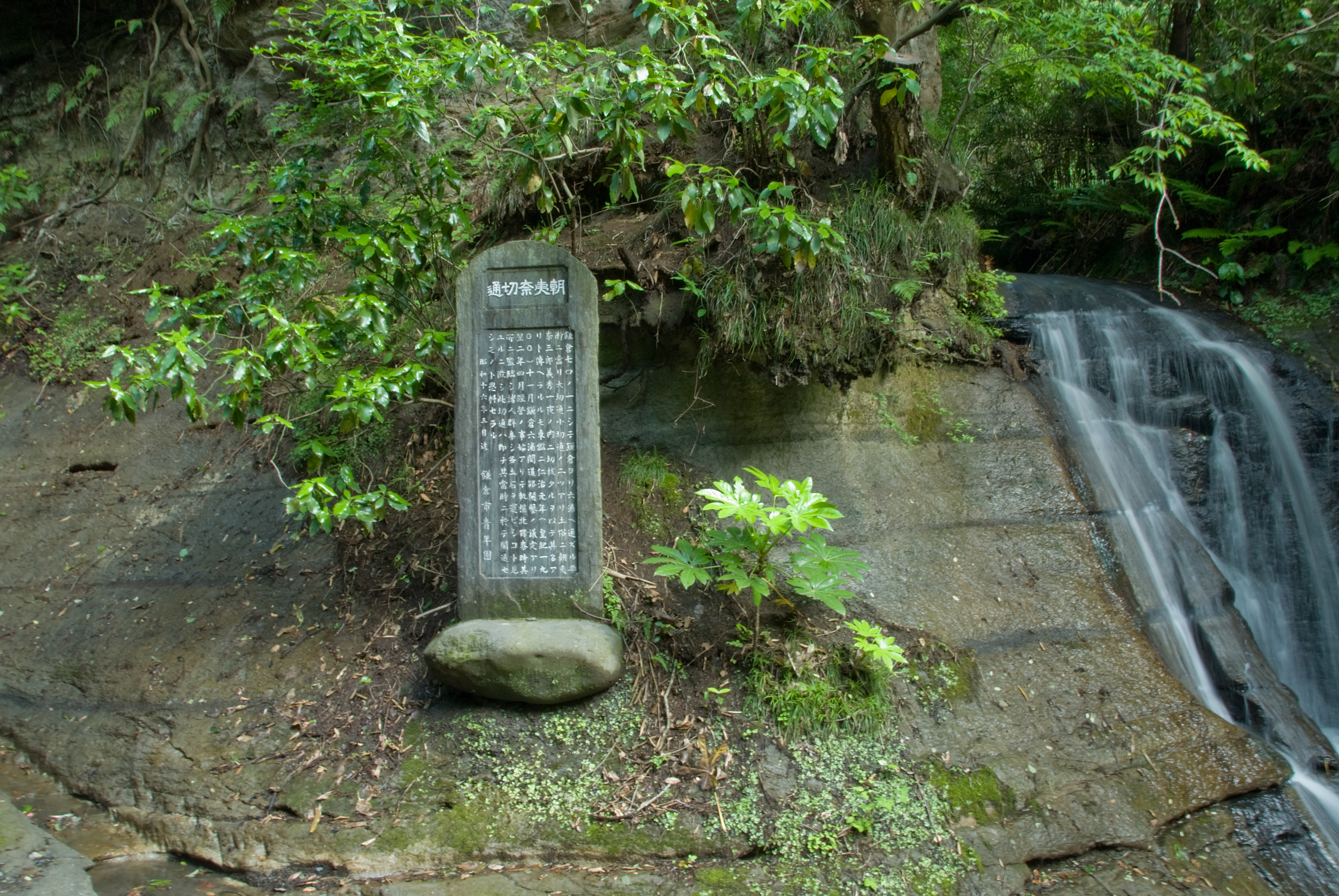|
Nitta Yoshisada
also known as Minamoto no Yoshisada was a samurai lord of the Nanboku-chō period Japan. He was the head of the Nitta clan in the early fourteenth century, and supported the Southern Court of Emperor Go-Daigo in the Nanboku-chō period. He famously marched on Kamakura, besieging and capturing it from the Hōjō clan in 1333. Later, he fought the Ashikaga brothers on the Emperor's behalf in a see-saw campaign which saw the capital change hands several times. After a peaceful compromise was agreed, Yoshisada was entrusted with two royal princes. At the siege of Kanegasaki (1337), both princes were killed, along with Yoshisada's son, although Yoshisada was able to escape. He committed seppuku when his horse was killed at the siege of Kuromaru. Early life Yoshisada was born in 1301, the eldest son of Nitta Tomouji. He succeeded his father and became the lord of Nitta Manor in Kōzuke Province in 1317. At this time, he also became the head of the Nitta clan. Yoshisada courted a da ... [...More Info...] [...Related Items...] OR: [Wikipedia] [Google] [Baidu] |
Vairocana
Vairocana (from Sanskrit: Vi+rocana, "from the sun" or "belonging to the sun", "Solar", or "Shining"), also known as Mahāvairocana (Great Vairocana), is a major Buddha from Mahayana and Vajrayana Buddhism. Vairocana is often interpreted, in texts like the '' Avatamsaka Sutra'', as the Dharmakāya of the historical Gautama Buddha. In East Asian Buddhism ( Chinese, Korean, Japanese and Vietnamese Buddhism), Vairocana is also seen as the dharmakāya (the supreme buddha-body, the body of ultimate reality), and the embodiment of the Buddhist concept of wisdom and purity. Mahāvairocana is often translated into East Asian languages as "Great Sun Buddha" ( Chinese: 大日如來, pinyin: ''Dàrì Rúlái'', Japanese: ''Dainichi Nyorai''). In the conception of the Five Jinas of Mahayana and Vajrayana Buddhism, Vairocana is at the centre and is often considered a Primordial Buddha. In East Asian esoteric Buddhism, Mahāvairocana is considered to be a Cosmic Buddha whose body is th ... [...More Info...] [...Related Items...] OR: [Wikipedia] [Google] [Baidu] |
Ise Shrine
The , located in Ise, Mie Prefecture of Japan, is a Shinto shrine dedicated to the solar goddess Amaterasu Ōmikami and the grain goddess Toyouke-hime (Toyouke Omikami). Also known simply as , Ise Shrine is a shrine complex composed of many Shinto shrines centered on two main shrines, and . The Inner Shrine, Naikū (also officially known as "Kōtai Jingū"), is dedicated to the worship of Amaterasu and is located in the town of Uji-tachi, south of central Ise, where she is believed to dwell. The shrine buildings are made of solid cypress wood and use no nails but instead joined wood. The Outer Shrine, ''Gekū'' (also officially known as "Toyouke Daijingū"), is located about six kilometers from Naikū and dedicated to Toyouke-Ōmikami, the god of agriculture, rice harvest and industry. Besides Naikū and Gekū, there are an additional 123 Shinto shrines in Ise City and the surrounding areas, 91 of them connected to Naikū and 32 to Gekū. Purportedly the home of the Sacred M ... [...More Info...] [...Related Items...] OR: [Wikipedia] [Google] [Baidu] |
Amaterasu
, often called Amaterasu () for short, also known as and , is the goddess of the sun in Japanese mythology. Often considered the chief deity (''kami'') of the Shinto pantheon, she is also portrayed in Japan's earliest literary texts, the () and the (720 CE), as the ruler (or one of the rulers) of the heavenly realm Takamagahara and as the mythical ancestress of the Imperial House of Japan via her grandson Ninigi. Along with two of her siblings (the moon deity Tsukuyomi and the impetuous storm-god Susanoo) she ranks as one of the "Three Precious Children" (, ), the three most important offspring of the creator god Izanagi. Amaterasu's chief place of worship, the Grand Shrine of Ise in Ise, Mie Prefecture, is one of Shinto's holiest sites and a major pilgrimage center and tourist spot. As with other Shinto ''kami'', she is also enshrined in a number of Shinto shrines throughout Japan. Name The goddess is referred to as ''Amaterasu Ōmikami'' ( / ; historical orthogr ... [...More Info...] [...Related Items...] OR: [Wikipedia] [Google] [Baidu] |
Ryūjin
Ryūjin ( 龍神, ), which in some traditions is equivalent to Ōwatatsumi, was the tutelary deity of the sea in Japanese mythology. In many versions Ryūjin had the ability to transform into a human shape. Many believed the god had knowledge of medicine and many considered him as the bringer of rain and thunder, Ryūjin is also the patron god ('' ujigami'') of several family groups. This Japanese dragon, symbolizing the power of the ocean, had a large mouth. He is considered a good god and patron of Japan, since the Japanese population has for millennia lived off the bounty of the sea. Ryūjin is also credited with the challenge of a hurricane which sank the Mongolian flotilla sent by Kublai Khan. Ryūjin lived in Ryūgū-jō, his palace under the sea built out of red and white coral, from where he controlled the tides with magical tide jewels. Sea turtles, fish, jellyfish, snakes, and other sea creatures are often seen as Ryūjin's servants. Mythology How the jellyfish l ... [...More Info...] [...Related Items...] OR: [Wikipedia] [Google] [Baidu] |
Taiheiki
The (Chronicle of Great Peace) is a medieval Japanese historical epic (see '' gunki monogatari'') written in the late 14th century and covers the period from 1319 to 1367. It deals primarily with the Nanboku-chō, the period of war between the Northern Court of Ashikaga Takauji in Kyoto, and the Southern Court of Emperor Go-Daigo in Yoshino. Original work The latest English translation consists of 12 chapters of the 40-chapter epic, and spans the period from Go-Daigo's accession in 1318 (when Takauji was still a minor vassal of the Kamakura shogunate's Hōjō clan), through Takauji's betrayal of the Hōjō, and Go-Daigo's fall and expulsion by Takauji in 1333, to his return to Kyoto in 1338. Go-Daigo, unlike many of the emperors before and after him, sought to supersede the power of the ''shōguns'', and to actually rule in addition to reigning in name. Thus began a series of battles, both military and political, as the Fujiwara family, who dominated the Imperial regency f ... [...More Info...] [...Related Items...] OR: [Wikipedia] [Google] [Baidu] |
Sagami Bay
lies south of Kanagawa Prefecture in Honshu, central Japan, contained within the scope of the Miura Peninsula, in Kanagawa, to the east, the Izu Peninsula, in Shizuoka Prefecture, to the west, and the Shōnan coastline to the north, while the island of Izu Ōshima marks the southern extent of the bay. It lies approximately southwest of the capital, Tokyo. Cities on the bay include Odawara, Chigasaki, Fujisawa, Kanagawa, Fujisawa, Hiratsuka, Itō, Shizuoka, Itō, and Kamakura, Kanagawa, Kamakura. History The center of the 1923 Great Kantō earthquake, Great Kantō earthquake in 1923 was deep beneath Izu Ōshima Island in Sagami Bay. It devastated Tokyo, the port city of Yokohama, and the surrounding prefectures of Chiba Prefecture, Chiba, Kanagawa, and Shizuoka Prefecture, Shizuoka, and caused widespread damage throughout the Kantō region. The shallow nature of the seabed on the north of the bay, and the funnelling effect of tsunami and typhoon wave energy, contributed to cer ... [...More Info...] [...Related Items...] OR: [Wikipedia] [Google] [Baidu] |
Inamuragasaki
is a cape at the western end of Yuigahama (Beach) in Kamakura, Kanagawa, Kamakura, Kanagawa Prefecture, Japan. The cape divides Yuigahama from Shichirigahama (Beach) and Enoshima. Its name seems to stem from its shape, similar to a stack of rice at harvest time (an ). At its foot on the Shichirigahama side there is a park, the . History Because the ancient Tōkaidō (road), Tōkaidō highway passed along the sea south of this cape before heading to the Miura Peninsula, before the opening of the Kamakura's Seven Entrances#The Gokuraku Pass, Gokuraku Pass Inamuragasaki was the traditional point of entry to Kamakura at the time of the Kamakura shogunate. Now crossed by a road (see photo), it used to be impassable by land and was therefore one of the natural defenses that made Kamakura an impregnable fortress. For this reason, it appears often in the historical record. It is first mentioned in the Genpei Jōsuiki because the Miura clan in 1180 crossed it twice to go rescue Minamoto ... [...More Info...] [...Related Items...] OR: [Wikipedia] [Google] [Baidu] |
Kamakura's Seven Entrances
The city of Kamakura, Kanagawa in Japan, is closed off on three sides by very steep hills and on the fourth by the sea: before the construction of several modern tunnels and roads, the so-called Seven Entrances (''Nana-guchi''), or (all artificial) were its main links to the rest of the world.Kamakura Shōkō Kaigijo (2008: 54-56) The city was therefore a natural fortress and, according to the Azuma Kagami, it was chosen by Minamoto no Yoritomo as his base specifically for this reason. Historical Landmark - Asaina Pass (June 5, 1969) In 1240 the Kamakura shogunate ordered works to improve communications between the city and the important center of Mutsuura, and construction was started in April of the following year. The Shikken Hōjō Yasutoki himself directed the work and carried stones and dirt with his horse to speed it up. Mutsuura was then a center of salt production and an important port for the distribution of goods not only to and from Kantō centers like Awa Province ... [...More Info...] [...Related Items...] OR: [Wikipedia] [Google] [Baidu] |
Yoshitoshi - 100 Aspects Of The Moon - 39
Tsukioka Yoshitoshi (; also named Taiso Yoshitoshi ; 30 April 1839 – 9 June 1892) was a Japanese printmaker. Nussbaum, Louis Frédéric. (2005)"Tsukoka Kōgyō"in ''Japan Encyclopedia,'' p. 1000. Yoshitoshi has widely been recognized as the last great master of the ukiyo-e genre of woodblock printing and painting. He is also regarded as one of the form's greatest innovators. His career spanned two eras – the last years of Edo period Japan, and the first years of modern Japan following the Meiji Restoration. Like many Japanese, Yoshitoshi was interested in new things from the rest of the world, but over time he became increasingly concerned with the loss of many aspects of traditional Japanese culture, among them traditional woodblock printing. By the end of his career, Yoshitoshi was in an almost single-handed struggle against time and technology. As he worked on in the old manner, Japan was adopting Western mass reproduction methods like photography and ... [...More Info...] [...Related Items...] OR: [Wikipedia] [Google] [Baidu] |
Musashi Province
was a Provinces of Japan, province of Japan, which today comprises Tokyo, Tokyo Metropolis, most of Saitama Prefecture and part of Kanagawa Prefecture. It was sometimes called . The province encompassed Kawasaki, Kanagawa, Kawasaki and Yokohama. Musashi bordered on Kai Province, Kai, Kōzuke Province, Kōzuke, Sagami Province, Sagami, Shimōsa Province, Shimōsa, and Shimotsuke Provinces. Musashi was the largest province in the Kantō region. History Musashi had its ancient capital in modern Fuchū, Tokyo, and its provincial temple in what is now Kokubunji, Tokyo. By the Sengoku period, the main city was Edo, which became the dominant city of eastern Japan. Edo Castle was the headquarters of Tokugawa Ieyasu before the Battle of Sekigahara and became the dominant city of Japan during the Edo period, being renamed Tokyo Prefecture, Tokyo during the Meiji Restoration. Hikawa Shrine (Saitama), ''Hikawa-jinja'' was designated as the chief Shinto shrine (''ichinomiya'') of the provinc ... [...More Info...] [...Related Items...] OR: [Wikipedia] [Google] [Baidu] |






